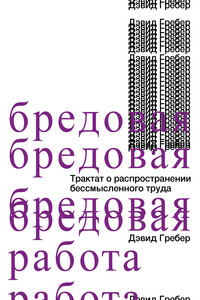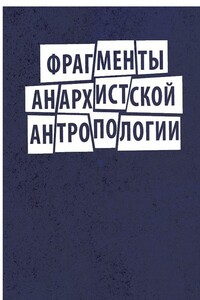2004. “Crises of Credit: Monetary and Erotic Economies in the Jacobean Theater.” In Plotting early modem London: new essays on Jacobean City comedy (Dieter Mehl, Angela Stock, Anne-Julia Zwierlein, editors), pp. 55–74. London: Ashgate Publishing.
Watson, Alan. 1987. Roman Slave Law. Baltimore: Johns Hopkins University Press.
Watson, James L. 1980. “Transactions in People: The Chinese Market in Slaves, Servants, and Heirs.” In Asian and African Systems of Slavery (James L. Watson, editor), pp. 2.23-250. Cambridge: Cambridge University Press.
Weber, Max. 1924. Gesammelte Aufsatze zur Soziale- und Wirtschaftegeschichte. Tubingen. English version: The Agrarian Sociology of Ancient Civilizations. (R. I. Frank, trans.) London: Verso.. 1961. General Economic History. New York: Collier Books.
1978. Economy and Society: An Outline of Interpretive Sociology. (Ephrain Fischoff, trans.) Berke- ley: University of California Press.
Wennerlind, Carl. 2003. “Credit-money as the Philosopher's Stone: Alchemy and the Coinage Problem in Seventeenth-century England.” History of Political Economy 35:234–261.
Westbrook, Raymond. 1971. “Jubilee Laws.” Israel Law Review 6: 209–226.
1984. “The enforcement of morals in Mesopotamian law.” Journal of the American Oriental Society 104:753–756.
1988. Old Babylonian Marriage Law. Archlv fur Orientforschung, Beiheft 23. Horn: F. Burger.
1990. “Adultery in Ancient Near Eastern Law.” Revue biblique 97:542–580.
1991. Property and the Family in Biblical Law. Sheffield: Sheffield Academic Press.
1995. “Slave and Master in Ancient Near Eastern Law.” Chicago-Kent Law Review 70:1631–1676.
1999. “Vitae Necisque Potestas.” Historia: Zeitschrift fur Alte Geschichte 48 (2): 203–223.
Westenholz, Joan Goodnick. 1989. “Tamar, Qedesa, Qadistu, and Sacred Prostitution in Mesopotamia.” Harvard Theological Review 82:245–265.
Westermann, William L. 1955. The Slave Systems of Greek and Roman Antiquity. Philadelphia: American Philosophical Society.
Whelan, T. S. 1979. The Pawnshop in China. Ann Arbor: Centre for Chinese Studies, University of Michigan. Whitaker, C. W. A. 2002. Aristotle's De interpretatione: contradiction and dialectic. Oxford: Oxford University Press.
White, Jenny Barbara. 2004. Money makes us relatives: women's labor in urban Turkey. London: Routledge. Whiting, John Roger Scott. 1971. Trade Tokens: A Social and Economic History. London: Newton Abbot. Wiedemann, Thomas. 1981. Greek and Roman Slavery. New York: Routledge.
Wiener, Margaret J. 1995. Visible and invisible realms: power, magic, and colonial conquest in Bali. Chicago: University of Chicago Press.
Wilbur, C. Martin. 1943. Slavery in China during the Former Han Dynasty. Anthropological Series, vol. 34. Chicago: Chicago Field Museum of Natural History.
Wilcke, Claus. 1985. “Familiengrundung im alten Babylonien.” In Geschlechtsreife und Legitimation zur Zeugung (E.W Müller, ed.), pp. 213–317. Freiburg and Munchen: Alber.
Williams, Brett. 2004. Debt for Sale: A Social History of the Credit Trap. Philadelphia: University of Pennsylvania Press.
Williams, Carl 0.1937. Thraldom in Ancient Iceland: A Chapter in the History of Class Rule. Chicago: University of Chicago Press.
Williams, Eric. 1944. Capitalism and Slavery. Chapel Hill: University of North Carolina Press.
Williamson, George Charles. 1889. Trade tokens issued in the seventeenth century in England, Wales, and Ireland, by corporations, merchants, tradesmen, etc. Illustrated by numerous plates and woodcuts, and containing notes of family, heraldic, and topographical interest respecting the various issuers of the tokens. London: E. Stock.
Wilson, Monica Hunter. 1951. “Witch Beliefs and Social Structure.” The American Journal of Sociology 56 (4): 307–331.
Wink, Andre. 2002. Al-Hind: Early medieval India and the expansion of Islam, 7th-11 th centuries. Leiden: E.J. Brill.
Wirszubski, Chaim. 1950. Libertas as a Political Ideal at Rome During the Late Republic and Early Principate. Cambridge: Cambridge University Press.
Wolf, Robert L. 1954. “The Mortgage and Redemption of an Emperor's Son: Castile and the Latin Empire of Constantinople.” Speculum 29:45–85.



